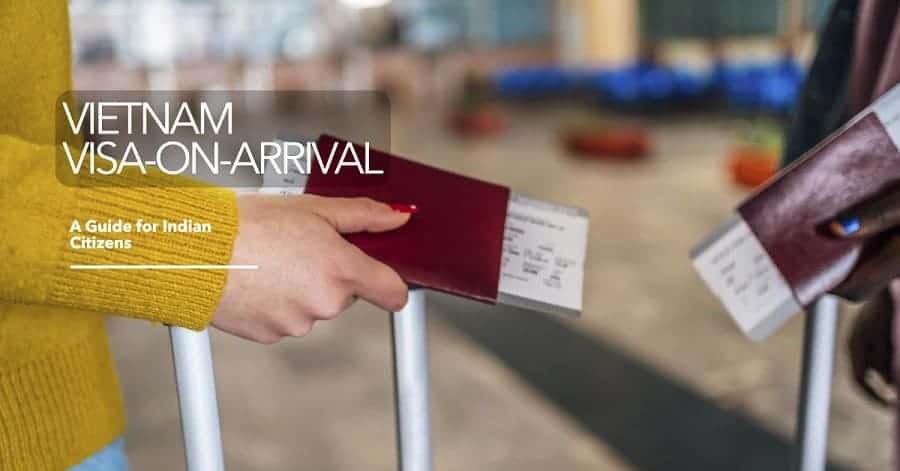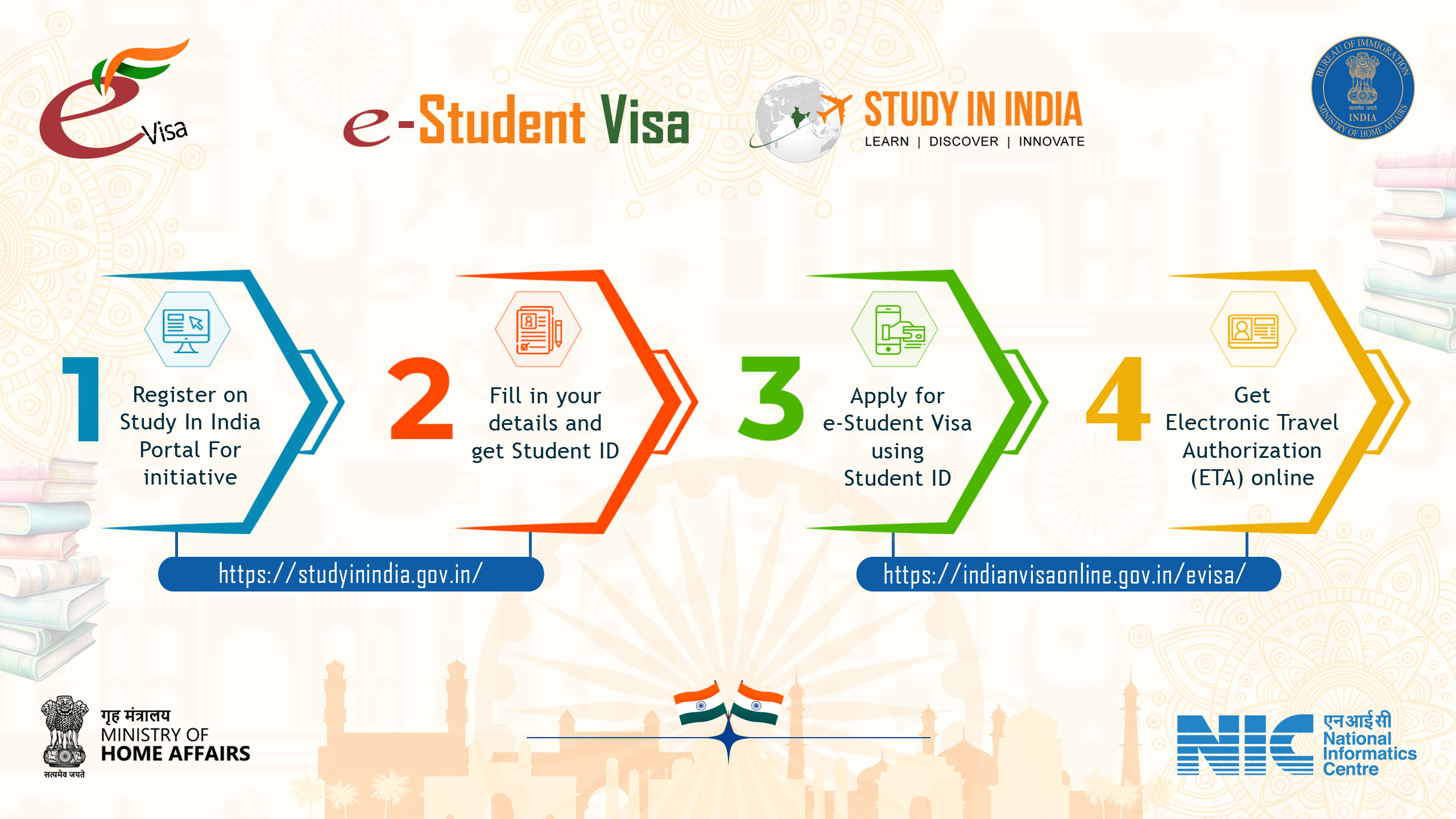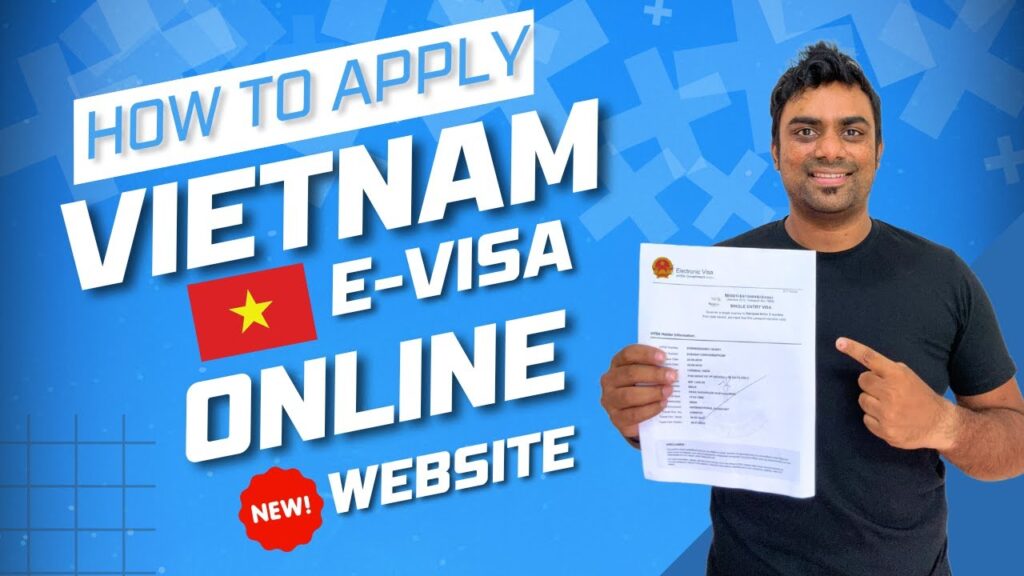Planning a trip to Vietnam? The Vietnam E-Visa Guide for Indian Passport Holders is your ultimate resource to navigate the application process smoothly. This comprehensive guide covers eligibility, step-by-step application instructions, required documents, common mistakes, and travel regulations to ensure a hassle-free experience.
Introduction to the Vietnam E-Visa for Indian Citizens

Vietnam has become an increasingly popular destination for Indian travelers, thanks to its stunning landscapes, rich culture, and affordable travel options. The introduction of the Vietnam E-Visa has simplified the visa process, allowing Indian passport holders to apply online without visiting an embassy.
This section provides an overview of the e-visa system, its benefits, and why it’s the preferred choice for Indian travelers.
What is a Vietnam E-Visa?
The Vietnam E-Visa is an electronic travel authorization that allows foreign nationals, including Indian passport holders, to enter Vietnam for tourism, business, or transit purposes.
It eliminates the need for physical visa stamps or embassy visits, making the process faster and more convenient.
The e-visa is valid for single or multiple entries, depending on the type applied for, and permits stays of up to 30 days.
Why Choose an E-Visa Over Traditional Visa Methods?
Applying for a Vietnam E-Visa is significantly more efficient than traditional visa methods.
The online application takes just minutes, and approvals are typically processed within 3-5 business days.
Additionally, the e-visa reduces paperwork and saves time, making it ideal for last-minute travelers.
Who Can Apply for a Vietnam E-Visa as an Indian Citizen?
Indian passport holders with a valid passport (at least six months before expiry) and a digital passport-sized photo can apply.
The e-visa is suitable for short-term visits, including tourism, business meetings, and family visits.
However, those planning long-term stays or employment must apply for a different visa category through the embassy.
Eligibility Criteria for Indian Passport Holders Applying for a Vietnam E-Visa

Before applying for a Vietnam E-Visa, Indian travelers must ensure they meet specific eligibility requirements.
This section outlines the essential criteria, including passport validity, travel purpose, and other prerequisites.
Passport Validity and Other Basic Requirements
Indian applicants must possess a passport with at least six months of validity from the intended date of entry.
A clear scanned copy of the passport’s bio page and a recent passport-sized photograph (4×6 cm) are mandatory.
Travelers should also have a valid email address to receive the e-visa approval letter.
Permitted Entry Points and Travel Purpose
The Vietnam E-Visa allows entry through 33 designated international checkpoints, including major airports like Noi Bai (Hanoi) and Tan Son Nhat (Ho Chi Minh City).
It is essential to specify the correct entry and exit points during the application, as changes afterward may invalidate the visa.
The e-visa covers tourism, short business trips, and family visits but does not permit employment or long-term stays.
Restrictions and Special Cases
Certain travelers, such as those with criminal records or previous visa violations, may face additional scrutiny.
Applicants with dual citizenship must ensure they apply using the same passport they will travel with.
Those requiring longer stays or multiple entries beyond the e-visa’s scope must explore alternative visa options.
Step-by-Step Guide to Applying for a Vietnam E-Visa Online

Applying for a Vietnam E-Visa is straightforward if you follow the correct steps.
This section provides a detailed walkthrough of the online application process, ensuring a smooth experience.
Accessing the Official Vietnam E-Visa Portal
The first step is to visit the official Vietnamese government e-visa website.
Avoid third-party agencies to prevent unnecessary fees or scams.
Fill in the required personal details, including full name, date of birth, and passport information.
Uploading Required Documents and Paying Fees
Applicants must upload a scanned passport copy and a recent photograph meeting the specified dimensions.
The visa fee varies depending on the processing time (standard or urgent).
Payment is made securely via credit/debit card or other accepted online methods.
Tracking Application Status and Receiving Approval
After submission, applicants receive a confirmation email with a tracking number.
Processing typically takes 3-5 business days, but delays can occur during peak travel seasons.
Once approved, the e-visa is sent via email and should be printed for presentation upon arrival.
Required Documents and Information for the Vietnam E-Visa Application
Preparing the correct documents is crucial for a successful Vietnam E-Visa application.
This section lists all necessary paperwork and tips for ensuring a smooth submission.
Essential Documents Checklist
A valid Indian passport with at least six months of remaining validity is mandatory.
A digital passport-sized photo (4×6 cm, white background) must be uploaded.
Proof of travel itinerary (flight tickets, hotel bookings) may be required but is not always mandatory.
Common Mistakes in Document Submission
Many applicants submit blurry or incorrectly sized photos, leading to rejection.
Ensure the passport scan includes all edges and is clear without glare.
Double-check all entered details to avoid discrepancies between the application and passport information.
Additional Supporting Documents for Special Cases
Business travelers may need an invitation letter from a Vietnamese company.
Those visiting family should have a letter of invitation from their host in Vietnam.
Travel insurance, though not mandatory, is highly recommended for unforeseen circumstances.
Common E-Visa Application Errors and How to Avoid Them
Mistakes in the Vietnam E-Visa application can lead to delays or rejections.
This section highlights frequent errors and provides practical solutions to prevent them.
Incorrect Personal Details and Passport Information
Typos in names, passport numbers, or birth dates are common and can invalidate the visa.
Always cross-verify details with the passport before submission.
Ensure the passport number matches exactly, including letters and digits.
Uploading Poor-Quality Scans or Photos
Blurry or improperly formatted documents are a leading cause of application rejections.
Use a high-resolution scanner for passport copies and follow the photo guidelines strictly.
Avoid shadows, reflections, or incorrect background colors in the photograph.
Selecting the Wrong Visa Type or Entry Points
Choosing a single-entry visa when multiple entries are needed can disrupt travel plans.
Verify the designated entry airports/land borders before finalizing the application.
Changes after submission are not permitted, so accuracy is critical.
Vietnam E-Visa Validity, Extension Options, and Travel Regulations
Understanding the Vietnam E-Visa validity and extension policies ensures compliance with local laws.
This section explains duration, renewal procedures, and essential travel regulations.
E-Visa Duration and Permitted Stay
The standard e-visa allows a 30-day stay with single or multiple entries, depending on the selection.
Overstaying the visa incurs daily fines and potential entry bans, so travelers must plan accordingly.
Extensions are not possible for e-visas; travelers must exit and reapply if needed.
Visa Extension and Conversion Limitations
Unlike traditional visas, e-visas cannot be extended from within Vietnam.
Those needing longer stays must leave the country and apply for a new visa or switch to a different visa category.
Consulting a local immigration office or agency for guidance is advisable.
Important Travel Regulations and Compliance
Visitors must carry a printed copy of their e-visa approval letter at all times.
Immigration officers may request proof of onward travel or accommodation details.
Adhering to local laws, including restrictions on photography in sensitive areas, is essential.
Conclusion
The Vietnam E-Visa Guide for Indian Passport Holders simplifies the visa process, making Vietnam an accessible destination for Indian travelers.
By following this guide—ensuring eligibility, preparing documents accurately, and avoiding common mistakes—applicants can secure their e-visa effortlessly.
With its convenience and efficiency, the Vietnam e-visa opens doors to unforgettable travel experiences in one of Southeast Asia’s most captivating countries.
`
This comprehensive Vietnam E-Visa Guide for Indian Passport Holders ensures a seamless application process, allowing travelers to focus on enjoying their Vietnamese adventure. Safe travels!



